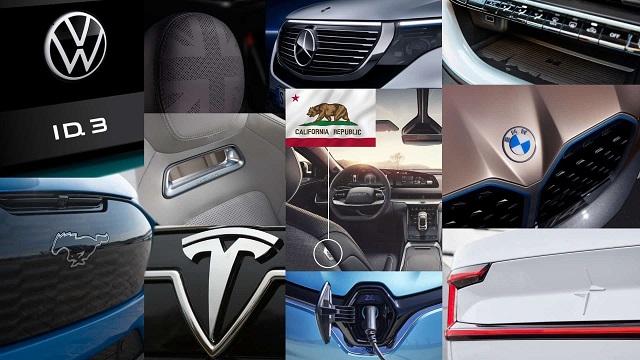Automotive
Automobiles, human nature, and the challenge of building cars that people actually want

From the Frontier Centre for Public Policy
By Terry Etam
Some people out there have an inner itch to do things different. Maybe it’s art, or music, or some other glorious pastime that we as the rest of humanity benefit from, far, far more than we pay. What sort of car these types drive is fascinating; usually something quirky or wonderfully weird; Neil Young spent years before he made it big driving an old hearse, various narcotics taped under the dash.
Others think completely differently, bone-dry aesthetically-speaking; thinkers who just want to make things better. Their inner guiding light is efficiency. I had a genius uncle, a farm boy who made it to high levels in national security in Ottawa through no formal education and sheer ingenuity, who would love describing how he could achieve 70 miles per gallon driving carefully and methodically and under-the-speed-limit around Ottawa in a tiny car, joyously oblivious to Type A heads exploding in his rear-view mirror.
Most people are somewhere in the middle, neither artists nor efficiency maniacs, a space that is quite comfortable for most of humanity. We like nice things, we like how they look, but we also care about practicality. We want to be different from everyone else! But just a bit, or that’s weird. And we all want to drive! Even if it is getting harder and harder for today’s youth to afford it, that drive is still there if finances allow.
This overwhelmingly dominant trait can drive the two extreme camps crazy, a battle that becomes stark and vivid in the automotive industry. Our automotive choices make a statement whether it is intentional or not, and whether we want it or not, because nothing makes a person easier to judge than their automotive preferences.
That’s a reality that people who want to change the world have to accept. It is a very hard thing to swallow, particularly for logicians who can make a near-perfect argument as to why one choice is clearly superior to another, and yet people will look you in the eye and do the opposite. (Long ago when minivans were fully earning their stripes as useful and comfortable transport, about when the perplexing stigma of minivan ownership was setting in, I watched a friend of a friend, standing five-foot-not-much, try and wrestle a mountain bike onto the roof rack of her SUV (yes, yes, I helped), and as she did so she said, “What I really need is a minivan but what would people think of me if I drove one?”)
Minivan vs. SUV was symbolic of the sheer power of how the 80-percent-in-the-middle will shape the landscape, to the extent that personal choice is allowed (hope you’re not scoffing at that, if so, see: federal 2035 all-EV mandate). Because I’m petty and juvenile, it used to fill me with scorn to see people sub-optimize such an expensive purchase on the altar of ‘what other people think of me’.
I’m still petty and juvenile, but have gained enough miles under my wheels to know that things aren’t so simple, and even if they are, it is hardly any of my business what people choose or why. Some care about resale value. Some like an available colour. Some like the feel of the steering wheel or comfort of the seats or the look of the front grille. So what.
It’s not easy for automakers either, because it’s not just that people will actually make auto purchase decisions based on some ridiculously small feature, but also that the lead time from when consumer preferences head in a new direction can be far less than the time it takes to develop a new vehicle. For example, a significant change in gas prices can lead to a preference, or abhorrence, for small, fuel efficient cars, while manufacturers won’t really be able to fully reflect this for a few years.
That’s what makes the EV ‘transition’ so fascinating. If there is one thing that is glaringly obvious in the whole topic, it is that people absolutely do not purchase ‘what they are supposed to’. You can’t make any sense out of it, because the whims and motivations come from external influences that are unpredictable. If Taylor Swift started driving a black Toyota Corolla sedan all of a sudden, what do you think would happen to black Toyota Corolla sedan sales? Not sales of grey ones though, pah! What am I, crazy? Who’d be caught dead in one of those things?
So now, particularly here in Canada but in many other jurisdictions including California, drivers are being told they will not be allowed to buy any new vehicle that isn’t EV, nor will manufacturers be allowed to sell anything that isn’t an EV.
The manufacturers are playing their part, nervously unveiling EV after EV after EV. They advertise the crap out of them, auto publications dutifully test and review them, and the media breathlessly reports how a model’s sales skyrocket by, say 33 percent, when sales go from 3 to 4 units per month.
The media also jumped all over stories about huge demand backlogs, how some new model about to enter showrooms has thousands and thousands of orders or deposits. In 2021, news widely circulated that “Ford F-150 Lightning pre-orders have been closed after nearly 200k reservations”, or Motor Trend’s “Ford Takes in More Than 44,500 F-150 Lightning Orders in 48 Hours”.
Think about how amazing that order book is. A mass manufacturer like Ford is so swamped with interest that they simply must grandiosely and loudly announce: “Sorry Sir or Madam, we can no longer take your order, our success is just too overwhelming.” Many manufacturers reported similar order-book hysteria.
It turns out that the story was surreal, but not quite as it sounds. Through all of 2022, Ford sold only 15,617 electric pickups. The headlines for 2022 results remain starry eyed and insipid: “Ford Tripled BEV Sales In December, Doubled In 2022”, although that couldn’t hold a candle to the infantile enthrallment saved for late 2023: “Ford F-150 Lightning breaks monthly sales record, doubling in November”.
Sales in November 2023 did indeed ‘double’ compared to the prior November, but in the entire quarter Ford sold only 11,905 units. In the two years after the hail-the-future order book bumper crop, Ford only sold about 40,000 F-150 Lightnings. In two years. Recently Ford announced a halving of 2024 production plans down to about 1,600 units per week, or just under 7,000 per month.
Keep in mind that in 2023 Ford sold over 750,000 F-150 internal combustion pickups in the US, and many of these go to urban dwellers for whom an EV pickup might make total sense – ones that rarely leave the city (EVs are in general far better suited to urban environments where they can scoot home safely to a nice warm private charging station every night).
Which brings us back to consumer behaviour again, that mystifying and surely exasperating trait of humanity that no amount of cajoling and ‘proper thinking’ will break. “Two hundred thousand reservations!” to “Slashing production forecasts!” In half. On a variant of the most popular vehicle in the US.
Tesla continues to dominate EV sales, and many people, when they decide they want an EV, mean they want a Tesla (in the pickup world, Rivian might be the Tesla of EV pickups, time will tell). Major auto manufacturers are having a very difficult time seeing EV sales grow to any level that would approach profitability.
It’s hard not to feel bad for them, if one can or should feel bad for huge corporations. How on earth does one plan for the coming year, when two hundred thousand consumers say yes, I want one of those, but then 80 percent change their mind by the time Ford can actually manufacture them?
But observe; whispering in their manufacturing ears are governments saying not subtly that “Don’t worry, we will be legislating internal combustion out of existence, just build them and they will come…” Said less loudly is the supporting evidence: “because they have no choice.” Well, it worked for a while in the Soviet Union didn’t it?
Making things even more complicated for manufacturers are upcoming elections in the US (this year) and Canada (what feels like an eternity but is really only 1.5 years) that could see either minor or major revisions to EV policy rollouts of the past few years.
But forget all the uncertainty surrounding manufacturers; that all gets trumped (no pun intended) by the human element. Here’s an important realization that we all need to accept: Some stuff just gives us a sense of belonging with others in a way that is critical to mental well being. Some people like to dress in the latest fashion. Some get the most popular hair styling. Some drive a rugged SUV because of what it says about them.
That can make manufacturers pull their hair out, because something illogical might be their biggest hit ever. But on top of that one must now layer the rancid decay of politics. EV sales seem to be falling along political fault lines, which in a way is not surprising: one side of the political spectrum sees climate change as a moral imperative to be dealt with as rapidly as possible, and that element, to the extent it can afford it, is responsible for the highest uptake of EVs (it is another sign that ‘left wing vs. right wing’ is a historical anachronism of little value any more; the traditional ‘left’ represented the working class, the downtrodden, the ones that needed a safety net; today’s main EV purchasers are wealthy enough to pursue Teslas first and foremost, often with a multi-car garage full of options). EV as political statement is yet another example of how our preferences link us to a tribe of our choice, rational or not, and it will be supra-humanly difficult to change that, whether in Canada or the US or Togo.
All one can conclude from this hodgepodge of observations is that the auto market will continue to reflect certain aspects of human nature that we may not even be aware of ourselves, and also reflect physical, financial and security realities/rationales that will not be changed by government edict. I have no idea what that means in terms of a transition to EVs, and that trajectory could change with the development of new battery technology, for example. But at present, it should be clear, based on examples like the Ford F-150 Lightning EV experience, that human enthusiasm and professed care does not necessarily translate well into the cold hard reality of what people put their money down on.
It is a nuanced world. People are imperfect and beautifully so, it adds colour to the world. Either the landscape is more or less free, where people express themselves as they wish, or it is a closed quasi- or full-dictatorship where that is not permitted (see: censorship, over-reaching legislation, thought police/moralistic systemic governmental intervention, personal carbon budgets, etc.). The latter never succeeds because it fights human nature, and the former has elements that make no sense outside one’s own circle of people that get it. I choose not to be part of some tribes, but I probably choose to be part of others, and likely do so subconsciously, which makes the whole thing even trickier.
Current politicians and WEF-types believe they have a blueprint for humanity to unroll. It is an absurdity, if for no other reason than they can’t comprehend the complex realities of 8 billion people whom they are trying to force in a certain direction. They are trying to force them all into metaphorical minivans, because minivans make more sense than anything else. They will fail.
Terry Etam is a columnist with the BOE Report, a leading energy industry newsletter based in Calgary. He is the author of The End of Fossil Fuel Insanity. You can watch his Policy on the Frontier session from May 5, 2022 here.
Automotive
Parliament Forces Liberals to Release Stellantis Contracts After $15-Billion Gamble Blows Up In Taxpayer Faces

After betting taxpayer billions on a green-industry deal that collapsed under U.S. tariffs, MPs move to expose what Ottawa promised Stellantis and what Canadians actually got for the money.
Parliament just blew the lid off one of the biggest corporate giveaways in Canadian history.
For years, Ottawa and Queen’s Park have bragged about “historic investments” in green manufacturing. What they didn’t say is that $15 billion of your money went to Stellantis, the Dutch auto conglomerate behind Chrysler, Jeep, and Ram, only for the company to announce it’s cutting 3,000 jobs in Brampton and shipping them south to the United States.
That betrayal is what triggered a heated meeting of the House of Commons Government Operations Committee on October 21. What started as routine procedure turned into a full-scale reckoning over how billions were handed to a foreign corporation with almost no strings attached.
Conservative MP Garnett Genuis opened with a blunt motion: produce every contract, memorandum of understanding, or side deal the government signed with Stellantis and its affiliates since 2015. Every page, every clause, in both official languages, “without redaction.” The demand wasn’t symbolic, it was about finding out if Trudeau’s government ever required the company to keep those Canadian jobs it was paid to “protect.”
Liberals scrambled to block it. MP Jenna Sudds proposed an amendment that would let bureaucrats black out whatever they deemed “sensitive.” In practice, that meant hiding anything embarrassing — from cabinet discussions to corporate fine print. Opposition MPs called it exactly what it was: a cover-up clause. It failed.
The committee floor turned into open warfare. The Bloc Québécois tried a softer sub-amendment giving the House Law Clerk power to vet redactions. Conservatives countered with their own version forcing departments to hand over unredacted contracts and justify any blackouts in writing. After a suspension and some backroom wrangling, a rare thing happened: compromise.
The motion passed unanimously. Even the Liberals couldn’t vote against it once the light was on.
The debate itself revealed how badly Ottawa has lost control of its own economic agenda. Conservatives pressed officials on why Canadians were paying billions for “job creation” only to see Stellantis pack up for Illinois once U.S. tariffs came down. Liberals blamed Trump, tariffs, and “global conditions,” the excuses were almost comical. Liberal members blamed Donald Trump —yes, really— for Stellantis abandoning Canada. According to them, Trump’s tariffs and “America First” trade policy scared the company into moving production south.
But here’s what they didn’t say: Trump announced his 2024 presidential campaign on November 15, 2022, promising to rip up Joe Biden’s green industrial agenda and bring manufacturing back to U.S. soil. Everyone heard it. Everyone knew it. And yet, on July 6, 2023, more than half a year later, Ottawa proudly unveiled its $15-billion subsidy for Stellantis and LG Energy Solution — a deal built entirely on the assumption that Trump wouldn’t win.
So let’s be clear about what happened here. They didn’t just hand billions to a foreign automaker. They gambled that the next U.S. president wouldn’t change course. They bet the house —your tax dollars— on a political outcome in another country.
Think about that. Fifteen billion dollars of public money wagered on a campaign prediction. They bet on black, and it landed on red.
Even if the gamble had gone their way — even if Trump had lost and Biden’s green subsidy regime had survived untouched — the deal would still have been a terrible bargain.
During the committee meeting, the Bloc Québécois pointed to the 2023 Parliamentary Budget Officer’s report, which projected that the combined federal and Ontario subsidies to Stellantis and Volkswagen, roughly $28 billion total, including Stellantis’s $15 billion share, wouldn’t even break even for twenty years. That means taxpayers would have to wait until the mid-2040s just to recover what Ottawa spent.
So imagine the “best-case scenario”: the U.S. keeps its green-industry incentives, the plant stays in Canada, and production runs at full capacity. Even then, ordinary Canadians don’t see a financial return for two decades. There are no guaranteed profits, no guaranteed jobs, and no repayment. It was a long-odds bet on a global policy trend, financed entirely with public money.
In other words, whether the roulette wheel landed on black or red, the house still lost because the government put your chips on the table in a game it never controlled.
Behind the numbers, the story is brutally simple: Ottawa slid its chips across the table, wrote the cheques, and Stellantis walked away with the winnings. When MPs tried to see the receipts, the government grabbed for the cover of secrecy — no sunlight, no scrutiny, just “trust us.”
Now, for the first time, Parliament is about to peek under the table. The committee will finally see the real contracts — not the press releases, not the slogans, but the fine print that tells Canadians what they actually paid for. The review will happen behind closed doors at first, but the pressure to show the public what’s inside will be enormous.
Because if those documents confirm what MPs already suspect —that there were no job guarantees, no clawbacks, and no consequences —then this isn’t just a bad hand. It’s a rigged table.
Ottawa didn’t just gamble with taxpayer money; it gambled against the odds, and the dealer —in this case, Stellantis— already knew the outcome. Even if the wheel had landed on black, taxpayers were still stuck covering a twenty-year “break-even” fantasy, as the Bloc reminded everyone.
The next two weeks will show Canadians whether their government actually bought jobs or just bought headlines. One thing is certain: the high-rollers in Ottawa have been playing roulette with your money, and the wheel’s finally slowing down.
Automotive
$15 Billion, Zero Assurances: Stellantis Abandons Brampton as Trudeau-Era Green Deal Collapses

Carney issues memos, Joly writes letters, and Freeland hides abroad—while 3,000 Canadian workers pay the price for a green gamble built on denial and delusion.
Stellantis has announced they’re leaving Brampton. That’s it. End of story.
Three thousand workers. Gone. A manufacturing base gutted. A city thrown into economic chaos. And a federal government left holding a $15 billion bag it handed over like a drunk tourist at a rigged poker table.
The Jeep Compass—the very vehicle they promised would anchor Ontario’s role in the so-called “EV transition”—will no longer be built in Canada. Production is moving to Belvidere, Illinois. The same company that cashed billions of your tax dollars under the banner of “green jobs” and “economic transformation” has slammed the door and walked out. And no, this isn’t a surprise. This was baked into the cake from day one.
Let’s rewind.
In April 2023, under Justin Trudeau’s government, Chrystia Freeland—then Finance Minister—and François-Philippe Champagne, the Industry Minister, announced what they called a “historic” agreement: a multi-billion-dollar subsidy package to Stellantis and LG Energy Solution to build an EV battery plant in Windsor, Ontario.
It was sold as a turning point. The future. A Green Revolution. Thousands of jobs. A new industrial strategy for Canada. But in reality? It was a Hail Mary pass by a government that had already crippled Canada’s energy sector and needed a shiny new narrative heading into an election cycle.
And here’s what they didn’t tell you: the deal had no enforceable commitment to keep auto production in Brampton. There were performance-based incentives—yes—but only for the battery plant. Not for the Brampton assembly line. Not for the existing workforce. And certainly not for ensuring the long-term health of Canada’s domestic auto industry.
They tied this country’s future to a globalist fantasy. A fantasy that assumed the United States would remain under the control of climate-obsessed technocrats like Joe Biden. A fantasy that required a compliant America pushing carbon neutrality, electric vehicle mandates, and billions in matching subsidies for green infrastructure.
But in November 2024, Americans said no.
Donald Trump was elected president. And just as he promised, he tore Biden’s green agenda to shreds. He pulled out of the Paris Climate Accord—again. He dismantled the EV mandates. He unleashed American oil and gas. But he didn’t stop there. Trump imposed a sweeping America First manufacturing policy, pairing 25% tariffs on imported goods with aggressive incentives to bring factories, jobs, and supply chains back onto U.S. soil.
And it’s working—because the United States doesn’t strangle its industries with the kind of red tape, carbon taxes, and bureaucratic self-sabotage that Canada does. Energy is cheaper, regulations are lighter, and capital actually wants to stay. So when companies like Stellantis look at the map, it’s no contest.
Now Stellantis, like any rational corporation, is doing what any business does under pressure: protecting its bottom line. They’re shifting production to a country that rewards investment instead of punishing it, a country that actually wants to build things again. That’s Trump’s America—competitive, unapologetic, and open for business—while Canada clings to a collapsing green fantasy and wonders why the factories keep leaving.

So what does Canada do in response? Our Prime Minister, Mark Carney, issues a carefully scripted memo on social media—not action, not legislation, not binding commitments—just a memo—reassuring workers he “stands by” the auto sector while offering vague promises about future budgets and long-term resilience. Lets be clear Carney isn’t saving jobs; he’s eulogizing them. Those 3,000 positions aren’t “paused” or “in transition.” They’re gone. Finished. Packed up and heading south. No memo, no committee, no press conference is bringing them back.
Chrystia Freeland, the architect of this mess, isn’t around to answer for any of it. She’s been conveniently shipped off to Kyiv, far from the consequences of the green boondoggles she helped engineer

And Industry Minister Mélanie Joly? She’s doing what this government does best: issuing strongly worded letters, drafted by lawyers, polished by comms teams, and lobbed into the void like they carry any real weight. She’s threatening legal action against Stellantis—vague, undefined, and almost certainly toothless. As if a global automaker backed by EU investors and billions in international capital is going to flinch because Ottawa wrote them a nasty note.
But let’s be absolutely clear here—what legal action? What’s the actual mechanism Ottawa is threatening to use? This wasn’t a blank cheque handed to Stellantis. According to public records, The $15 billion deal was built around performance-based incentives, structured to release funding only if Stellantis delivered on agreed milestones: production output, sales volume, battery module manufacturing at the Windsor facility. If they didn’t meet those metrics, they wouldn’t get paid. That’s the public line. That’s the defense.
Opposition Calls for Accountability
Conservatives, led by Raquel Dancho, are demanding real accountability, a formal investigation, a full reopening of the House of Commons Standing Committee on Industry and Technology (INDU) under Standing Order 106(4).
This isn’t a symbolic gesture. It’s a procedural weapon. When invoked, 106(4) forces Parliament to reconvene the committee, even if the government doesn’t want to, and compels ministers and officials to testify under oath. That’s what Dancho and her colleagues, Ted Falk, Michael Guglielmin, and Kathy Borrelli, have done. Their letter, dated October 15, 2025, demands that INDU immediately examine the Stellantis debacle — the $15 billion taxpayer-funded subsidy that failed to secure a single guarantee for Canadian auto jobs.
The letter is explicit. It references Stellantis’ decision to move Jeep Compass production from Brampton, Ontario to Illinois, a move that puts 3,000 Canadian jobs at risk despite the billions handed to the automaker under the Trudeau-Freeland-Carney green industrial strategy. It details how the federal and Ontario governments offered over $15 billion to secure battery plant investments, but with no enforceable job protection clauses to safeguard workers at Stellantis’s Canadian operations.
It doesn’t stop there. The letter points directly at Mark Carney, accusing him of breaking his promise to “put elbows up” and negotiate a fair deal with President Trump. It notes that Carney’s October 7th White House visit yielded nothing but new U.S. tariffs on Canadian autos and lumber, while Stellantis and GM expanded their operations south of the border. “Mark Carney broke his promise,” the MPs write, “and his weakness abroad is costing Canadian jobs at home.”

Dancho’s accompanying tweet lays out the message clearly and without spin:
“Stellantis received up to $15 billion in taxpayer subsidies—with no assurances of job retention in Canada. Yesterday, Stellantis announced that they were moving production to the U.S. and investing $13 billion in their economy. Conservatives are calling to reconvene the Industry Committee to study this decision and learn how such a failure happened. While the Liberals pat themselves on the back for announcements and rhetoric, auto workers are being told that their jobs are on the chopping block. They deserve clarity.”
Dancho’s move changes the game. With the NDP gutted and no longer shielding the government in committee, the opposition finally has the numbers and the mandate to dig. Ministers like Mélanie Joly and François-Philippe Champagne will now have to answer, under oath, for the deals they signed. Officials from Innovation, Finance, and Employment Canada will be subpoenaed to explain what oversight, if any, was built into the Stellantis agreements.
Final thoughts
I wrote about this when the deal was signed, and I wasn’t guessing. I said it plainly: this $15 billion green industrial experiment was a reckless, ideological bet that depended entirely on Donald Trump not winning the presidency.
Now here we are. Trump’s back in office — and he’s gone even further than I predicted. He didn’t just rip up Biden’s climate agenda; he imposed broad “America First” tariffs across the board to drag manufacturing back onto U.S. soil. Twenty-five percent duties on Canadian and Mexican goods, combined with tax breaks and energy policies that make it cheaper to produce in America than anywhere else. That single move detonated the fragile logic behind Trudeau and Freeland’s so-called industrial strategy.
So Stellantis did what any corporation would do when faced with a government that punishes production and a neighbour that rewards it: it packed up and left. The company took billions in Canadian subsidies, thanked Ottawa for the free money, then announced a $13 billion expansion in the United States—under Trump’s protectionist umbrella.
Let’s be clear: when I bet, I bet smart. I hedge. I read the table. I make damn sure I’m holding something real. These people—the Liberal government—went all in with a high card and a hollow narrative, betting your tax dollars on a political fantasy. They thought they could bluff their way into an industrial renaissance while ignoring the shift happening just across the border.
And you want final thoughts? Here they are: I am absolutely sickened by the people responsible for this disaster and you know exactly who I mean. Chrystia Freeland, who vanished from Cabinet and failed up into some made up ambassador’s post, her entire political career a string of bailouts, virtue signals, and globalist pageantry. And François-Philippe Champagne, the man who handed out our tax dollars like Monopoly money and couldn’t negotiate a cup of coffee without being outplayed.
They won an election based on this. Based on lies. Based on phony climate promises and fake job projections and polls manipulated by the same Mainstream Media that cashes federal subsidy cheques while calling themselves journalists. Do you think they’re going to hold Champagne accountable? Do you think they’re going to track Freeland down between photo ops in Kyiv and ask how 3,000 Canadian families are supposed to pay their mortgage now?
Of course not. They’re all on the same payroll.
Well guess what, I’m not. I don’t take their money. I don’t need their approval. And I am not shutting up. Not now. Not until that committee gets answers. Not until those ministers are dragged before Parliament. And not until Chrystia Freeland and François-Philippe Champagne are fired for the betrayal they’ve inflicted on Canadian workers.
This isn’t over. Not by a long shot. I’m going to bang this drum until it splits. And every time they try to bury this story, I’ll be there digging it back up. You’ve been lied to. Robbed. Betrayed. And someone is finally going to answer for it.
So stay tuned. Stay loud. And for God’s sake, stay angry.
-

 Business2 days ago
Business2 days agoTrans Mountain executive says it’s time to fix the system, expand access, and think like a nation builder
-

 Addictions2 days ago
Addictions2 days agoThe Shaky Science Behind Harm Reduction and Pediatric Gender Medicine
-

 Business2 days ago
Business2 days agoClean energy transition price tag over $150 billion and climbing, with very little to show for it
-

 Business2 days ago
Business2 days agoFlying saucers, crystal paperweights and branded apples: inside the feds’ promotional merch splurge
-

 MAiD1 day ago
MAiD1 day agoStudy promotes liver transplants from Canadian euthanasia victims
-

 Business1 day ago
Business1 day agoCanada has given $109 million to Communist China for ‘sustainable development’ since 2015
-

 International1 day ago
International1 day agoStrongest hurricane in 174 years makes landfall in Jamaica
-

 Business2 days ago
Business2 days agoCanada’s combative trade tactics are backfiring













